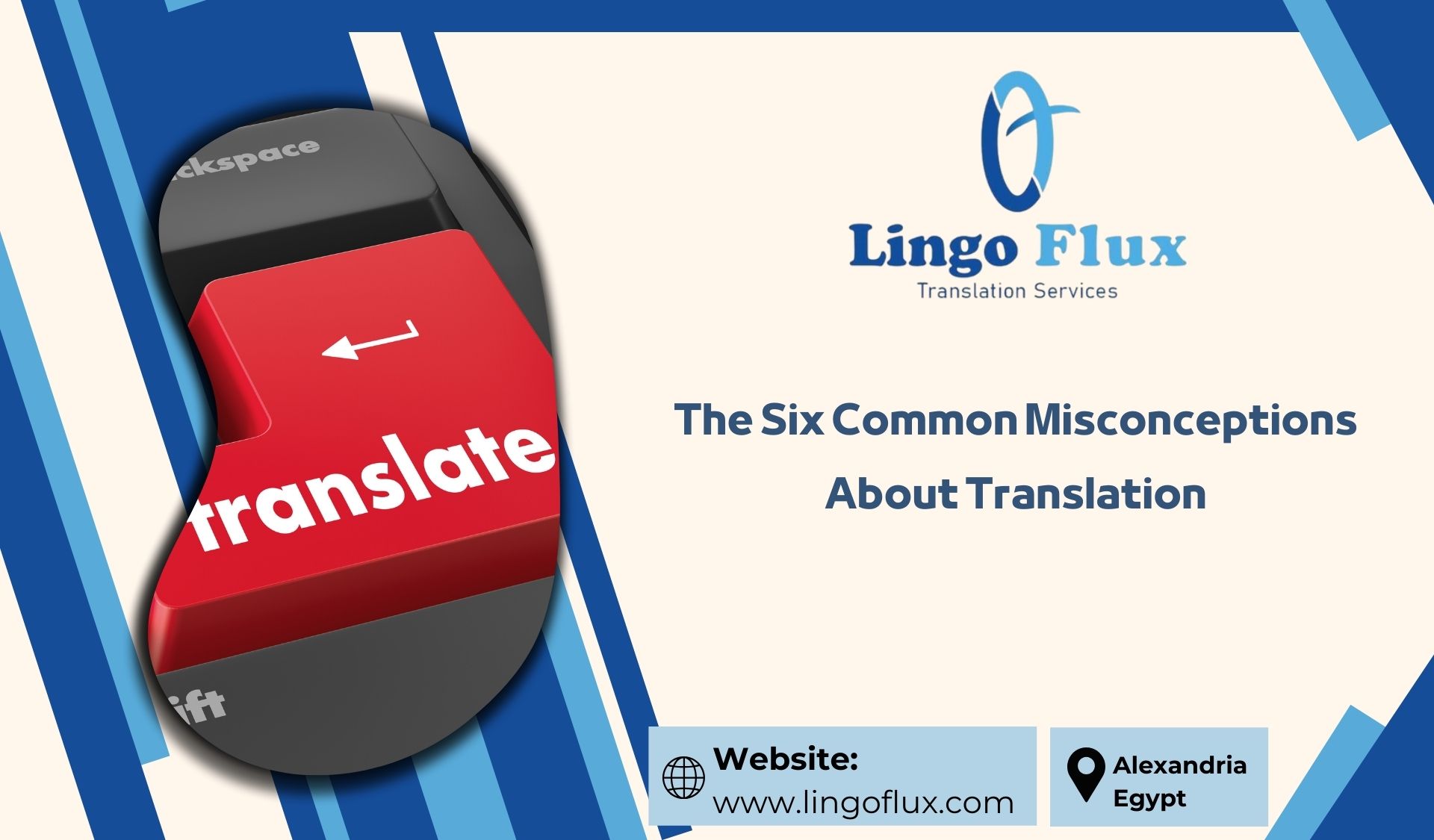The Six Common Misconceptions About Translation
The Six Common Misconceptions About Translation: There are some common misconceptions about translation, and most of these misconceptions arise because many people lack sufficient knowledge about the translation process. Therefore, this article will address the most common misconceptions about the translation process. The process of translation lies in taking a written message in one language and accurately translating it into another language. However, here are the six common misconceptions about translation:
Here, we will present the misconceptions about translation that many people are unaware of, with LingoFlux Certified Translation Office, which are as follows::
1. Anyone Bilingual Can Be a Translator There are many factors that make a certified translator in Dubai a skilled translator. They must be a good writer in their native language, so their translation is not only accurate but also clear and readable at the same time. Additionally, the translator needs in-depth knowledge of the subject matter they are translating.
Therefore, just because you speak two languages does not mean you are qualified to become a translator, as translation requires you to be trained and reliable. Unfortunately, some still try to reduce translation costs by assigning translation tasks to unprofessional individuals, which most often leads to poor-quality translations. Some believe that anyone who speaks two languages can be a translator, and while a translator needs to be proficient in two or more languages,
2. A Translator Can Translate Any Subject A translator should have a background in the type of materials being translated to be familiar with the terminology used and able to translate it correctly. Some believe that a translator is expected to be an expert in all fields, and this is another misconception.
Not all translators are qualified to handle any task assigned to them. For a translator to be able to translate a text into another language, they must understand the original source in terms of both terminology and subject matter. For example, technical translators have expertise in the technical terms present in the languages they translate from and into, and therefore, they can be relied upon to accurately translate technical documents.
3. Written Translation and Interpretation Are the Same Job Written translation and interpretation are two completely different professions that require entirely different skills. Although some do both written translation and interpretation simultaneously, many focus on only one of these two fields. Written translation differs from interpretation in that a written translator deals with written texts, while an interpreter helps with oral communication, acting as an intermediary between two or more parties communicating verbally with each other.
4. A Translator Must Be Fast Translators actually deal with many words that do not have direct translations, so they have to understand the text completely and then rewrite it in another language. A translator can translate about 2000 to 3000 words per day. Another misconception is that translators do not take much time or effort in translation, and this is completely incorrect because translation is not a quick process and is not done by simply replacing one word with another.
5. Machine Translation Alone Can Be Relied Upon Machine translation is considered an excellent means of translation. Machine translation may be good at translating single words and simple sentences that are frequently repeated on the internet. However, these tools cannot understand context; only a human translator understands the language and translates it correctly. For example, Google Translate can lead to inaccurate, funny, or incomprehensible translations. However, it is unlikely that machine translations will replace human translations. One of the most famous misconceptions about translation is that machine translation (like Google Translate)
6. A Good Translator Does Not Need Proofreading There is a common misconception that proofreading is a waste of money, and this is incorrect because proofreading is necessary to ensure the delivery of high-quality translation. For internal documents, some errors may be acceptable, but publishing materials that customers deal with without proofreading them before publication is a serious mistake. Remember that all translations, even those by the best translators, must be proofread to ensure the best quality. You can learn about the steps to choose a translation provider to select the most suitable one from your perspective to obtain the service you desire.
Learn more about the translation services we offer at Lingo Flux:
- Translate from Arabic to English
- French to Arabic Translation
Translation is not just the transfer of words between two languages; it is a bridge that connects cultures and ideas, and it requires skills that go far beyond mere linguistic knowledge. Correcting misconceptions about translation helps us appreciate this field and understand the challenges translators face daily. From the belief that translation is a literal process to the assumption that anyone bilingual can be a translator, there are many misconceptions that underestimate the value of the effort invested in translation.
The truth is that translation requires expertise, deep cultural understanding, and great accuracy to ensure the correct transfer of texts without losing meaning.
True appreciation for translators begins with recognizing the magnitude of the responsibility they bear. They are not just carriers of words but creators of global communication, ensuring mutual understanding between peoples.


